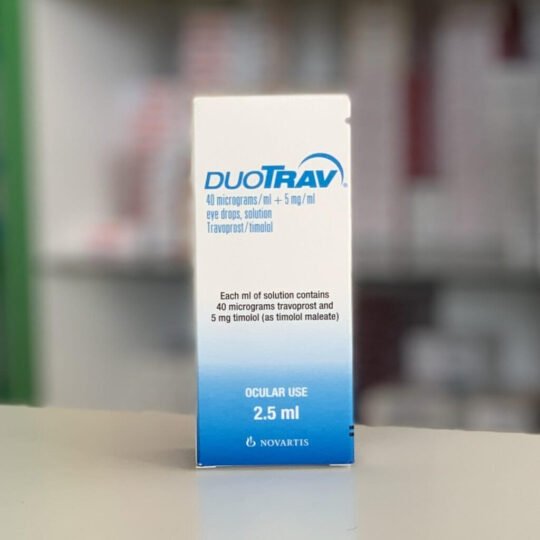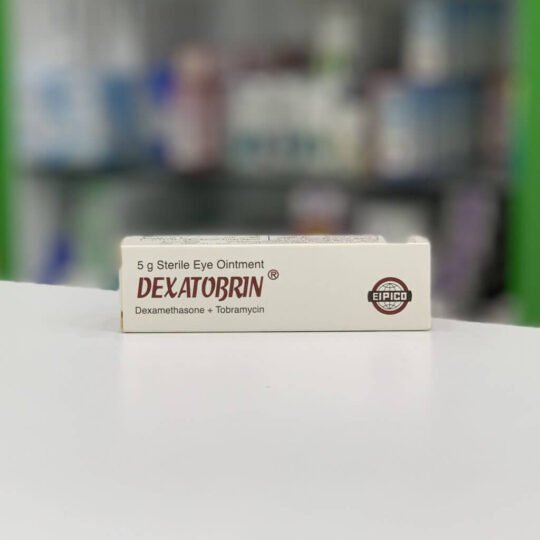Description:
Dexaflox Eye Drops is a combined ophthalmic suspension containing Ofloxacin (3.0 mg) and Dexamethasone (1.0 mg). It is used for the treatment of bacterial eye infections, inflammatory conditions of the eye, and post-surgical recovery. Ofloxacin is a fluoroquinolone antibiotic that helps eliminate bacterial infections, while Dexamethasone is a corticosteroid that reduces inflammation and swelling. Dexaflox is prescribed for conjunctivitis, keratitis, uveitis, corneal injuries, and post-operative care. It helps relieve eye discomfort, redness, and irritation while preventing bacterial infections.
Indications:
Dexaflox Eye Drops are indicated for the treatment of corticosteroid-responsive inflammatory conditions affecting the conjunctiva, cornea, and anterior segment of the eye where bacterial infections or the risk of bacterial infection exists.
-Chronic anterior uveitis
-Corneal injuries due to chemical, radiation, or thermal burns
-Penetration of foreign bodies
-Post-operative management of cataract, trabeculectomy, and refractive surgeries
POSOLOGY AND METHOD OF ADMINISTRATION
Adults and Children Over 2 Years:
Instill 1–2 drops into the affected eye(s) every 4 to 6 hours for the first 48 hours.
After infection and inflammation are controlled, gradually reduce frequency while continuing treatment for 48 hours after healing.
Method of Administration:
For ophthalmic use only.
Shake well before use.
Avoid touching the dropper tip to any surface to prevent contamination.
CONTRAINDICATIONS
Dexaflox is contraindicated in individuals with:
-Hypersensitivity to ofloxacin, dexamethasone, quinolones, or any excipient.
-Viral infections of the cornea and conjunctiva, such as varicella or vaccinia (except herpes zoster keratitis)
-Herpes simplex keratitis
-Fungal infections of ocular structures
PRECAUTIONS
-Prolonged use of corticosteroids may lead to increased intraocular pressure (IOP), glaucoma, and optic nerve damage.
-Use in patients with glaucoma requires close monitoring.
-Corticosteroids may mask infections and reduce resistance to bacterial, viral, and fungal infections.
-Topical corticosteroids should not be used for more than one week without ophthalmic supervision.
-Patients should avoid wearing contact lenses during treatment.
-Contains benzalkonium chloride, which may cause eye irritation and discolor soft contact lenses. Contact lenses should be removed before application and reinserted after 15 minutes.
-Hypersensitivity reactions (including anaphylaxis) have been reported. Discontinue use if an allergic reaction occurs.
-Use with caution in patients with QT prolongation risks, including congenital long QT syndrome, electrolyte imbalance, or concurrent use of QT-prolonging drugs.
-Prolonged use may result in bacterial resistance and superinfection.
PREGNANCY AND LACTATION
Pregnancy:
There are no adequate and well-controlled studies in pregnant women. Use only if the potential benefit justifies the potential risk.
Lactation:
Since ofloxacin and dexamethasone are excreted in breast milk, a decision should be made whether to discontinue nursing or discontinue the drug, considering the importance of treatment for the mother.
SIDE EFFECTS
-Common (≥1/100 to <1/10):
Eye discomfort, Eye irritation
-Uncommon (≥1/1,000 to <1/100):
Conjunctivitis, Keratitis, Blurred vision, Dry eye, Photophobia, Eyelid edema
-Not Known (frequency cannot be estimated from available data):
Endocrine disorders: Cushing’s syndrome, adrenal suppression
Nervous system disorders: Dizziness, headache
Eye disorders: Increased intraocular pressure, corneal erosion, mydriasis, visual acuity reduction, ptosis
Cardiac disorders: Ventricular arrhythmia, QT prolongation, torsades de pointes (in predisposed patients)
Gastrointestinal disorders: Nausea
Skin disorders: Stevens-Johnson syndrome, toxic epidermal necrolysis
-Prolonged corticosteroid use may lead to optic nerve damage, posterior subcapsular cataract formation, and increased intraocular pressure.
-Patients with thin corneas or sclera are at higher risk of perforation.
-Corticosteroids may slow wound healing and reduce immune resistance, potentially worsening infections.
-Visual disturbances, including central serous chorioretinopathy (CSCR), have been reported. Patients with blurred vision should seek ophthalmologic evaluation.
STORAGE
Store at a temperature not exceeding 25°C.
Keep out of reach of children.
PACKAGE
A carton box containing a plastic dropper bottle 5 ml.








